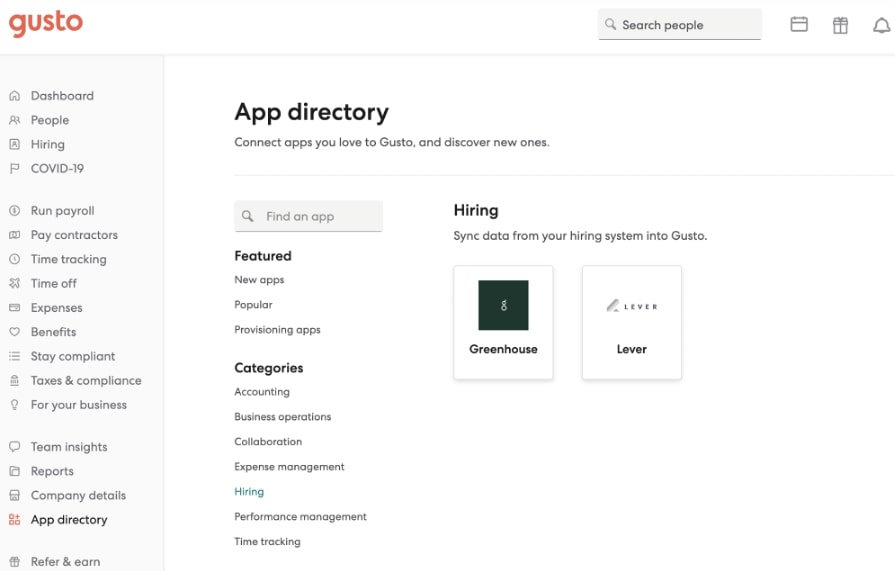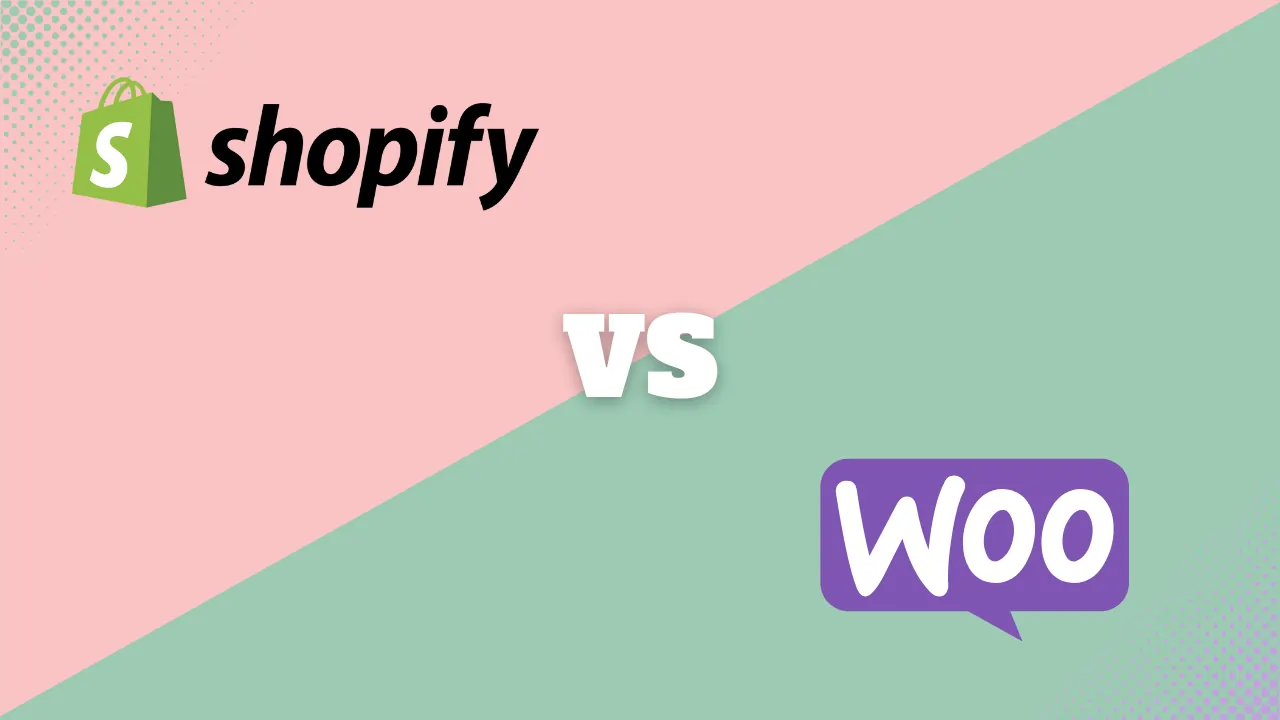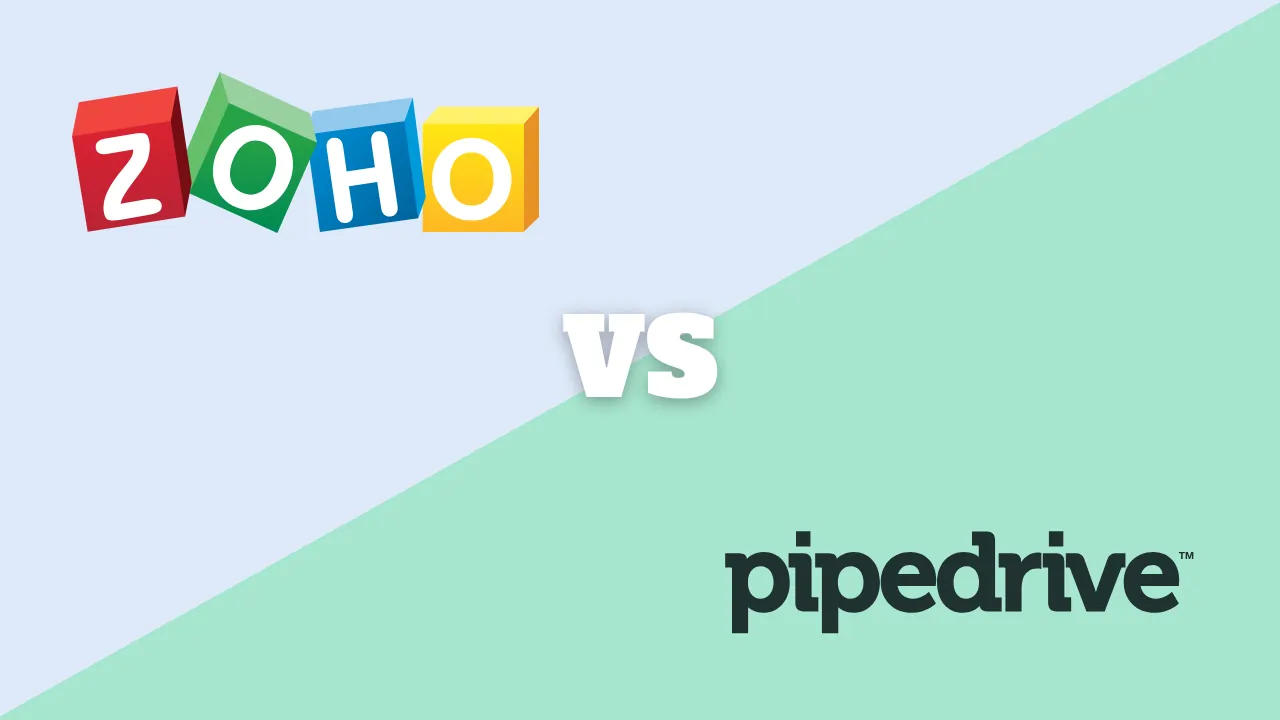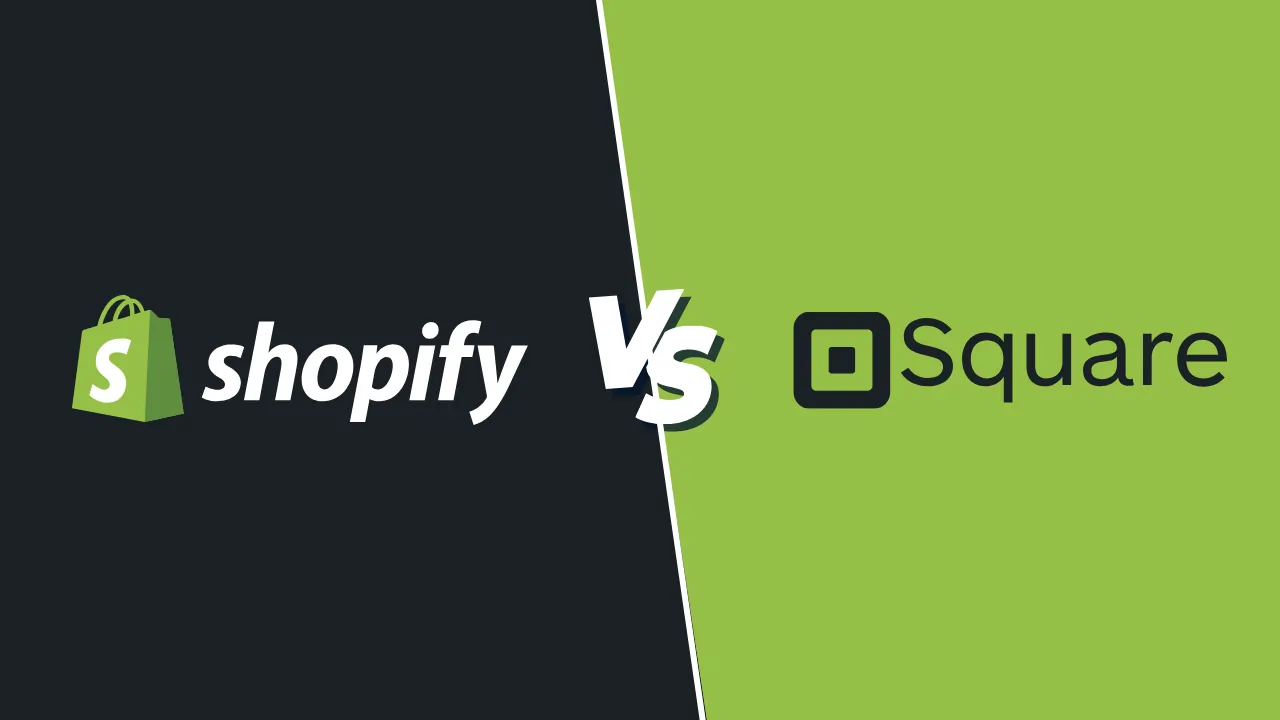Gusto vs ADP: Which is better for small business payroll in 2025?

Stuck in the Gusto vs ADP debate for your small business payroll? Choosing your payroll software is one of the highest-stakes decisions you’ll make. Get it right, and payroll becomes an invisible, 10-minute task. Get it wrong, and you’re buried in tax forms, compliance headaches, and frustrated employees. You’ve likely narrowed your search to Gusto and ADP.
This Gusto vs ADP comparison will cut through the noise.
The core key difference is simple. Gusto is the modern, tech-forward platform built from the ground up for small businesses, prioritizing ease of use and transparent pricing. ADP is the 800-pound gorilla, an industry-legacy provider with unmatched scalability and a focus on compliance that serves businesses of every size.
By the end of this article, you will have a clear, data-driven answer on which one is the right fit for your business. We’ll compare Gusto vs ADP on ease of use, features, and the all-important pricing.
Key points (quick summary)
- Gusto is best for: Startups and SMBs (under 100 employees) who prioritize a simple, all-in-one small business payroll platform and transparent, predictable pricing.
- ADP is stronger in: Scalability and compliance. It’s built for any business size, especially those in regulated industries or with plans for complex, rapid growth.
- The main difference in pricing: Gusto pricing is public and transparent. ADP pricing is quote-based and opaque, requiring a sales call.
- The key feature difference that separates them: For Gusto, it’s the seamless, user-friendly interface. For ADP, it’s the 24/7 support and ironclad tax-error guarantee.
- The ideal audience for Gusto (often seen as a strong ADP alternative): Tech-savvy SMBs, creative agencies, and startups that want an “Apple-like” experience.
- The ideal audience for ADP (a good Gusto alternative for complex businesses): Construction, healthcare, franchises, and any business with complex tax needs.
Head-to-head comparison
Gusto vs ADP: Market position & ideal use cases for small businesses
Gusto has firmly established itself as the modern, user-friendly leader for small businesses. Its philosophy is built on simplicity. The platform is an all-in-one solution, rolling payroll, benefits, and basic HR into one package. It’s ideal for business owners who handle HR themselves and want to get payroll done fast.
ADP is one of the founders of the payroll industry. Their small business product, “RUN by ADP,” is just the entry point into a massive ecosystem. They are built for businesses that are serious about compliance, have complex needs (like multi-state payroll), and want a partner that can grow with them from 5 employees to 5,000.
Platform comparison: Hardware, mobile apps, and ecosystem
This isn’t a “hardware” comparison in the traditional sense, but the platform differences are key.
- Gusto: Operates as a cloud-based SaaS platform with a highly-rated, modern mobile app for both employers and employees. Employees can easily see pay stubs, W-2s, and benefits information. The ecosystem is its set of software integrations.
- ADP: Also a cloud-based platform (RUN) with a robust mobile app. The key difference is that ADP’s ecosystem can include hardware. ADP offers integrated time clocks and other physical hardware for time and attendance, which is crucial for businesses with hourly workers in a physical location (e.g., retail, manufacturing).
Core features: A detailed breakdown of Gusto vs ADP capabilities
This is where the philosophical differences between Gusto and ADP become clear. Gusto bundles features into transparent tiers, while ADP offers a core payroll product that you can build upon with à la carte HR and compliance add-ons.
Gusto: Core features
Gusto’s features are tiered. The Simple plan is the base, Plus adds more HR and automation, and Premium is a full-service solution.
- Full-Service Payroll:
- What it does: Included on all plans. It automatically calculates, files, and pays your federal, state, and local payroll taxes. It also generates and files W-2s and 1099s. You can run unlimited payrolls at no extra cost.
- Payroll on AutoPilot®:
- What it does: A major time-saver. For salaried employees, you can set payroll to run automatically without you logging in.
- Employee Self-Service & Gusto Wallet:
- What it does: Employees get their own login to a clean dashboard (and mobile app) to see pay stubs, W-2s, and manage their bank info.
- Benefits Administration:
- What it does: You can shop for and manage health, dental, and vision insurance, as well as 401(k) plans, directly within Gusto. Deductions are synced to payroll automatically.
- Multi-State Payroll (Included in Plus & Premium):
- What it does: If you have remote employees, this feature is essential. It correctly calculates and files taxes for all states you operate in. The Simple plan only includes single-state payroll.
- Time Tracking & PTO Management (Included in Plus & Premium):
- What it does: Employees can clock in and out, and you can approve hours, which then sync directly to payroll. It also allows you to set up and manage PTO policies.
![]()
- HR Resource Center (Included in Premium):
- What it does: This is Gusto’s high-touch HR support. It gives you access to certified HR experts for advice and a compliant employee handbook builder.
ADP: Core features (RUN by ADP Platform)
ADP’s “RUN” platform is built in packages (Essential, Enhanced, Complete, HR Pro). You start with world-class payroll and add the HR features you need.
- Payroll & Tax Filing:
- What it does: This is ADP’s bread and butter. It includes automated payroll, tax calculation, and 50-state tax filing. A key differentiator is ADP’s tax error guarantee: if they make a tax filing error, they pay the penalty.
- RUN & DONE®:
- What it does: This is ADP’s version of automated payroll. It can be set to run automatically for businesses with simple, recurring payroll.
- Employee Access:
- What it does: Like Gusto, ADP provides a robust mobile app and online portal for employees to check pay stubs and update tax withholdings.
- SUI Management (Included in Enhanced & up):
- What it does: This is a major compliance feature. ADP’s team will manage your State Unemployment Insurance account, audit it for errors, and handle claims, which can be a huge time-saver.
- Background Checks (Included in Enhanced & up):
- What it does: ADP integrates background checks directly into the hiring workflow.
- Job Costing (Included in Enhanced & up):
- What it does: A critical feature for construction or agencies. This allows you to track employee hours and labor costs against specific projects or clients.
- HR HelpDesk (Included in Complete & up):
- What it does: This is ADP’s equivalent to Gusto’s Premium support. You get 24/7 access to a team of certified HR professionals for help with complex issues.

Gusto vs ADP: Reporting and business analytics comparison
- Gusto: Provides a strong set of standard, pre-built reports that are perfect for most small businesses (payroll register, tax payments, benefits summaries). The focus is on clarity and simplicity.
- ADP: This is a clear strength for ADP. Their reporting is far more granular and customizable. For a business that needs to track labor costs by project (using their Job Costing feature) or export data to a complex BI tool, ADP’s reporting is significantly more powerful.
Integrations: Does Gusto or ADP work better with QuickBooks?
A payroll system doesn’t live in a silo. Both Gusto and ADP have strong integrations with QuickBooks and Xero. The difference is in the rest of their app marketplaces.
- Gusto: Features a modern “App Directory” focused on the tools a tech-savvy small business uses.
- Key Integrations: QuickBooks Online, Xero, FreshBooks, Slack, Asana, Google Workspace, Shopify, Clover.

- ADP: Boasts one of the largest “Marketplace” in the industry. Its integrations range from simple small business tools to deep, enterprise-level ERP (Enterprise Resource Planning) systems.
- Key Integrations: QuickBooks (Online and Desktop), Xero, Oracle NetSuite, SAP, Workday, and hardware time clocks.
The takeaway: Gusto integrates perfectly with a modern, cloud-based software stack. ADP can integrate with anything, including complex, legacy, or enterprise systems.
AI & automation features for small business payroll
- Gusto: Their signature automation is “AutoPilot®”, which allows you to run payroll automatically for salaried employees who don’t have changes.
- ADP: Deploys AI more for data validation and compliance. Their “RUN & DONE®” feature not only automates payroll but also uses AI to flag potential errors (e.g., an employee’s hours are abnormally high) before you run it, preventing costly mistakes.
Gusto vs ADP pricing: Which is cheaper for a small businesses?
This is the most critical difference in the Gusto vs ADP comparison. Gusto pricing is fully transparent. ADP pricing is not.
Gusto uses a clear, public subscription model.
|
Gusto Plan |
Base Price (monthly) |
Per-Employee Price (monthly) |
Key Features |
|
Simple |
$49 |
$6 |
Single-state payroll, benefits, 4-day deposit. |
|
Plus |
$80 |
$12 |
Multi-state payroll, next-day deposit, PTO, time tracking. |
|
Premium |
$180 |
$22 |
Dedicated support, HR resource center. |
|
Contractor Only |
$35 |
$6 |
1099 contractor payments only. |
|
(Data from official Gusto partner website data, Nov 2025) |
ADP uses an opaque, quote-based model for its RUN platform. There is no public pricing.
- You must contact a sales representative for a custom quote.
- Reported starting prices vary wildly, from $39/mo + $5/person to $79/mo + $4/person.
- Some users report a one-time setup fee that can be as high as $2,000.
- This makes it impossible to answer “which is cheaper” without getting a quote.
So, which pricing model is better?
- Gusto is better for businesses that need predictable, transparent costs.
- ADP‘s model might be less expensive if you have very simple needs and can negotiate, but the lack of transparency and potential setup fee is a significant risk.
Customer support and ease of use: Gusto vs ADP
- Gusto: Known for its friendly customer support via phone, email, and chat during business hours. Multiple sources rate its platform as having superior ease of use, with a modern, intuitive interface.
- ADP: This is a major advantage for ADP. They offer 24/7/365 phone and live chat support. You can get help at 10 PM on a Sunday. This reliability is critical for many businesses, even if the user interface is considered more complex or “cluttered” than Gusto’s.
Scalability: Which is the best ADP or Gusto alternative as you grow?
- Gusto: Perfect for businesses growing from 1 to 100 employees. Beyond that, companies may start to look for a Gusto alternative with more advanced HR features.
- ADP: This is ADP‘s biggest advantage. There is no upper limit. A business can start on “RUN” and, as it grows, move seamlessly to ADP Workforce Now and then ADP Vantage for global enterprise needs. You will never outgrow the ADP ecosystem, making it the best Gusto alternative for rapid scaling.
Real-world scenarios: When to choose Gusto vs ADP
Scenario 1: The 15-person marketing agency
- Needs: Simple payroll for salaried and contract employees, easy benefits administration, integration with QuickBooks Online, and a simple way to onboard new hires.
- Best choice: Gusto
- Why: This is Gusto’s sweet spot. The transparent Gusto pricing fits their budget, the QuickBooks Online integration is seamless, and the superior ease of use saves the owner admin time.
Scenario 2: The 40-person construction company
- Needs: Payroll for hourly workers across three states, certified payroll reports, workers’ comp integration, and robust time tracking (potentially with physical clocks).
- Best choice: ADP
- Why: This business’s primary need is compliance. The complexity of multi-state payroll, plus the need for job costing and hardware integration, is exactly what ADP is built for and justifies the custom ADP pricing.
Gusto vs ADP: Final verdict & recommendation table
|
Factor |
Best Choice |
Reason |
|
Ease of use & setup |
Gusto |
The platform is modern, intuitive, and designed for non-HR experts. |
|
Feature depth & compliance |
ADP |
Unmatched depth in tax (SUI management, tax guarantee), compliance, and HR add-ons. |
|
Pricing value & transparency |
Gusto |
Gusto pricing is 100% transparent. ADP pricing is opaque and may have setup fees. |
|
Best for small business payroll (1-50) |
Gusto |
It’s built from the ground up for this market’s needs. |
|
Best for fast growth (ADP alternative) |
Gusto |
Gusto is the top ADP alternative for modern small businesses. |
|
Best for scaling (Gusto alternative) |
ADP |
ADP is the best Gusto alternative for complex businesses that will scale past 100 employees. |
|
Customer support |
ADP |
24/7/365 support provides unmatched reliability and peace of mind. |
FAQ: Gusto vs ADP for small business
Is Gusto really cheaper than ADP?
Gusto is more transparent, which makes it easier to budget for. For a typical small business, Gusto’s “Plus” plan is often less expensive than a comparable “RUN by ADP” plan, especially when you factor in ADP’s potential setup fees. However, a very simple business might get a cheaper quote from ADP.
Why is ADP pricing not public?
ADP pricing is quote-based to allow for customization. This lets them create packages for different industries and service needs, but it also makes it impossible for a small business to compare costs without a sales call.
What is the main difference between Gusto and ADP?
The main difference is philosophy. Gusto focuses on simplicity and an all-in-one experience for small businesses. ADP focuses on scalability and compliance for businesses of all sizes.
Is it hard to switch from ADP to Gusto?
It can be. Switching payroll providers is easiest at the end of a quarter or the end of the year. Both companies have teams to help, but migrating year-to-date payroll data can be complex.
Which is better for a one-person business: Gusto or ADP?
For a single-person S-Corp, Gusto‘s “Simple” plan is typically the easier and more cost-effective choice.
Does Gusto or ADP have better customer support?
It depends on what you value. Gusto‘s support is often rated as “friendlier,” but it has limited hours. ADP‘s support is 24/7/365, which is a critical advantage for reliability.
What are the key differences in features between Gusto and ADP?
The key differences are: 1) State Payroll: Gusto’s “Simple” plan is single-state only. 2) Support: Gusto is business hours; ADP is 24/7. 3) Tax Guarantee: ADP offers a tax-error penalty-free guarantee. 4) Hardware: ADP integrates with physical time clocks.
Does ADP integrate with QuickBooks better than Gusto?
Both have excellent integrations with QuickBooks Online. ADP also has a strong, long-standing integration with QuickBooks Desktop, which Gusto’s is less focused on.
What is the best ADP alternative for a small business?
Gusto is widely considered the best ADP alternative for small businesses that want modern software, transparent pricing, and a simple user experience.
What is the best Gusto alternative for a complex business?
ADP is the best Gusto alternative for businesses that are scaling fast, have complex tax or compliance needs, or operate in regulated industries like construction or healthcare.




